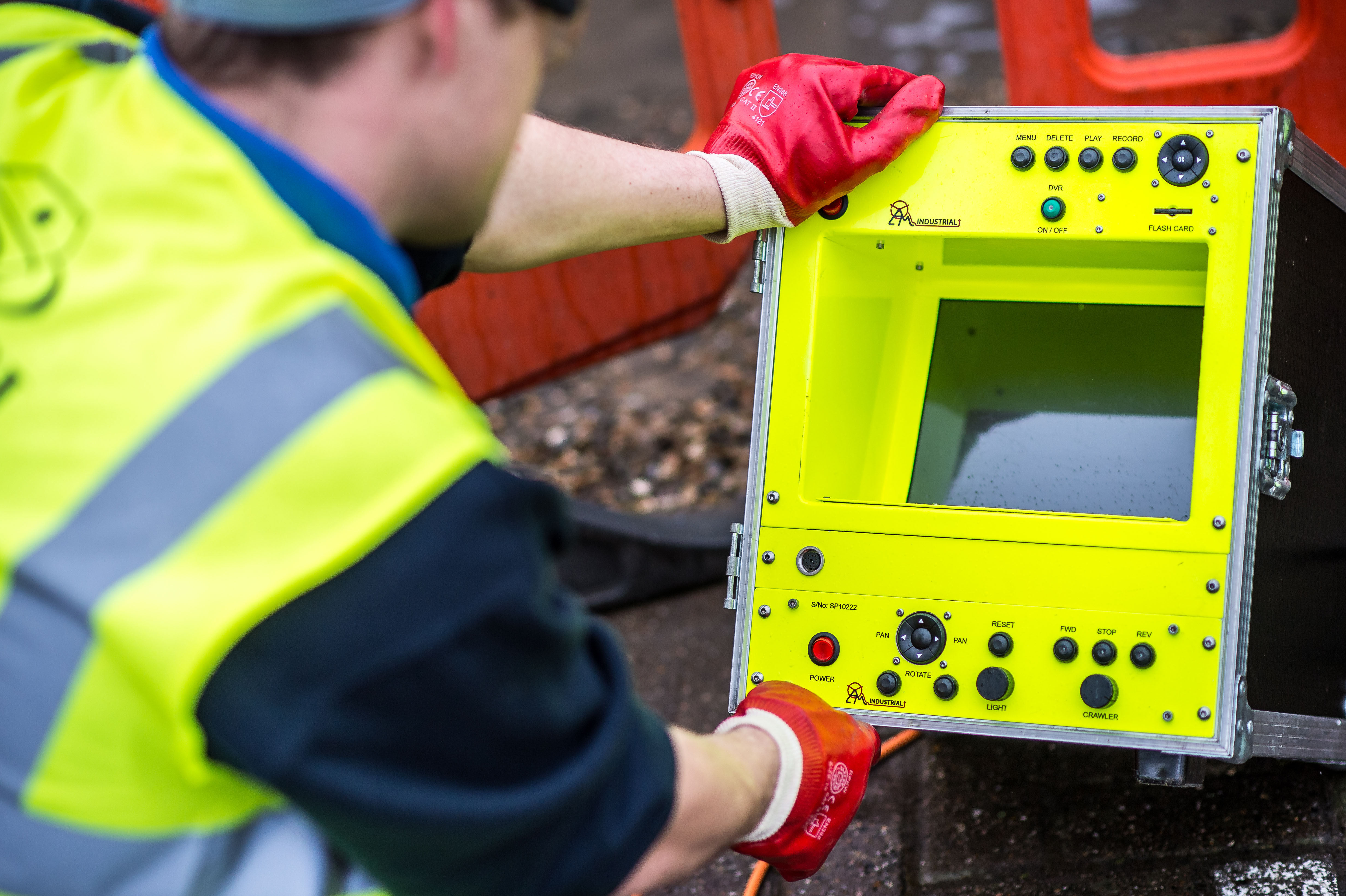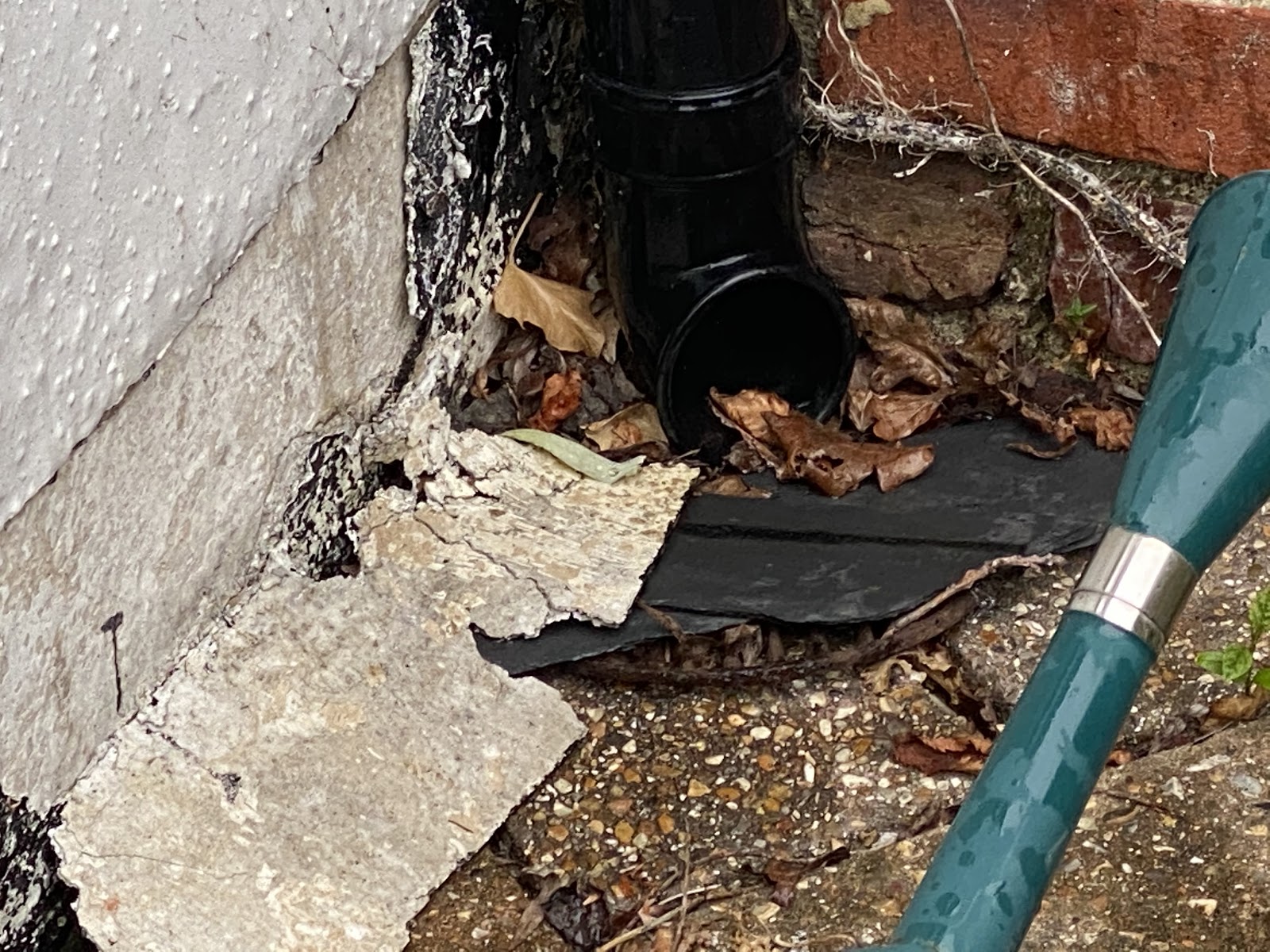Case Study | Surface Water Pollution
Roof water and surface water was entering the sewage system, discharging sewage water, ten times the amount allowed.

We attended a property to investigate suspected surface water and roof water entering sewage pipes and inspection chambers, either directly or indirectly leading to the treatment plant.
We duly conducted an urgent CCTV survey and inspection of the treatment plant due to the smells we experienced and the foul water rising to the surface.
Please see our findings as follows:-
Observations & Findings
Please note: during our short visit, we surveyed only part of the system due to the ongoing works being conducted by the ground workers at the bottom of the garden, levelling the land.
Therefore, a full CCTV survey of the remainder of the house drains, including the drains down the hill leading to the treatment plant, is still necessary.
The entrance to the driveway has a raised barrier, which is successfully stopping the surface water from entering the drive to the property from the sloping road.
The driveway to the house is covered with flintstone, has quite a slope towards, and favours the inspection chamber before the gate. After several tests using a hose, we demonstrated that water is finding its way to the inspection chamber and easily entering the sewage system. The channel in the chamber is continually running with clean water from many points that we tested.
On surveying the drain upstream of the chamber, we discovered two severe dropped sections of pipe, and open joints throughout, especially in the area in front of the entrance to the house. As explained, pipes that are constantly leaking every time we flush the toilet or use the facilities may allow a great deal of groundwater to enter the pipe.
Pipes run fairly close to the foundations of the house. The water ingress is also affecting the functionality of the treatment plant and soakaway‘s / drainage field. Therefore, we recommend that these pipes are lined and sealed or excavated and replaced.
The inspection chamber located at the rear of the building, downstream from the gate at the end of the footpath before it turns to go to the vent pipe, has an inspection lid covering with no seal.
The downpipe from the roof enters into the surface water gully, next to the sewage vent pipe.
We identified with cameras that this roof water gully discharges straight into the sewage system.
On inspection of the treatment plant, we discovered that the air compressor had stopped working. An important component of a treatment plant system is the air compressor. These units pump air into the tank, activating the sludge process, promoting microbial growth in the wastewater.
As agreed, we installed a new air compressor.
Advisement
As per our discussion concerning the treatment plant can handle more than two cubic meters or more during 24 hours. However, your limit to the ground is no more than two cubic meters per day. We suspect that the household generates no more than one cubic meter per day of wastewater.
With the addition of rainwater entering the foul system directly from the roof, and surface water entering the sewage system, it is our opinion that over 20 cubic meters of water are entering the foul system per day during a medium downpour of rain.
During a storm or heavy rainfall, the vast volume of water entering the treatment plant flushes particles in suspension (including any not allowed according to the manufactures and binding rules, i.e. oil, fats, or grease) straight through the system into the drainage field/land drains causing pollution.
Conclusion
The tests conducted showed that there is an abundance of surface water entering the sewage system. Based on our findings, it is imperative to remove all the surface water from the sewage system.
A connection to the main sewer is not possible, and a septic tank is certainly not capable of producing the clean water that your treatment plant can.
We, therefore, propose the following:-
ESTIMATE
• To carry out a full CCTV camera survey of the remainder of drains to check for any structural defects, and to determine if there are further entry points for surface water to enter the foul system
• To report back our findings with an estimate to carry out any repair works/diversions that may be required
• To advise on any additional works that may be required to protect the treatment plant
• To supply and install a 2 x new double sealed inspection chamber cover and frames, to suit the existing inspection chambers. 1 x cover to the chamber at the gate, and 1 x cover to the chamber at the end of the gravel path
• To supply and install approximately 15 m of a resin-based structural liner to effectively seal the pipework upstream of the chamber by the gate, as a means of repair.
The roof water downpipe found to be discharging into the gully connected to the foul system needs to be diverted to a new surface water soakaway. To provide an estimate for this, we will need to measure the size of the roof allowing for the gradient and calculate the size of the roof area for a new means of dispersing a large amount of roof water.
As discussed, during the excavation works, we can keep as much topsoil as possible to re-do or reinstate the land drains in the lower ground, like a mound.
Recommendations
In addition to the above estimate, we recommend installing an additional air compressor, complete with an alarm system to provide additional protection for your treatment plant.
The benefit of a double compressor is that the compressors will last longer, and if one unit breaks down, the other will take over. The second will be independently fused, with a separate air supply and not connected to the first compressor.
ESTIMATE
• To supply and install an additional air compressor, with an inbuilt alarm system, working on / off alternatively
• To extend the high-level alarm system (audio or beacon) which can be observed from the property

UNDERMINING EFFECT
The reason for the above recommendation is if there is a breach in the structural integrity of the drains, such as misaligned joints, cracks caused by ground movement, age, or root penetration of pipework, wastewater may escape. This increases the volume of water escaping, which in turn increases the quantity of soil being washed away, thereby creating a vicious spiral. This is known as an undermining effect, and can cause further damage to the drain run downstream, and can damage any nearby structural foundations. The longer that an undermining effect is left to take place, the greater the damage it can cause.
Your inquiry about cesspits
Please find some information below regarding cesspits:-
Cesspits can vary in different shapes and sizes and are installed entirely underground. Newer cesspits consist of a fibreglass holding tank with an inlet only.
A cesspit is designed for containment only and with no discharge. Therefore, the tank requires emptying regularly. To give an example, a 4000 gallons cesspit serving a family of four requires emptying every 8-12 weeks.
In the past, contractors would create a discharge from the cesspit so that the frequency of emptying required would be less. However, this causes contamination and discharge of raw sewage into the ground.
Although it is your legal right to install a cesspit, we wouldn’t usually advise it as an option and should only be considered as a last resort or when a ‘consent to discharge’ is refused or not possible. A cesspit is designed for containment only and requires regularly emptying, which can vary depending on its usage.
Cesspits are only installed these days when nothing else is available or possible. In our professional opinion, a cesspit devalues the property by at least £20,000 or £30,000 as it’s not a preferred system to have.

